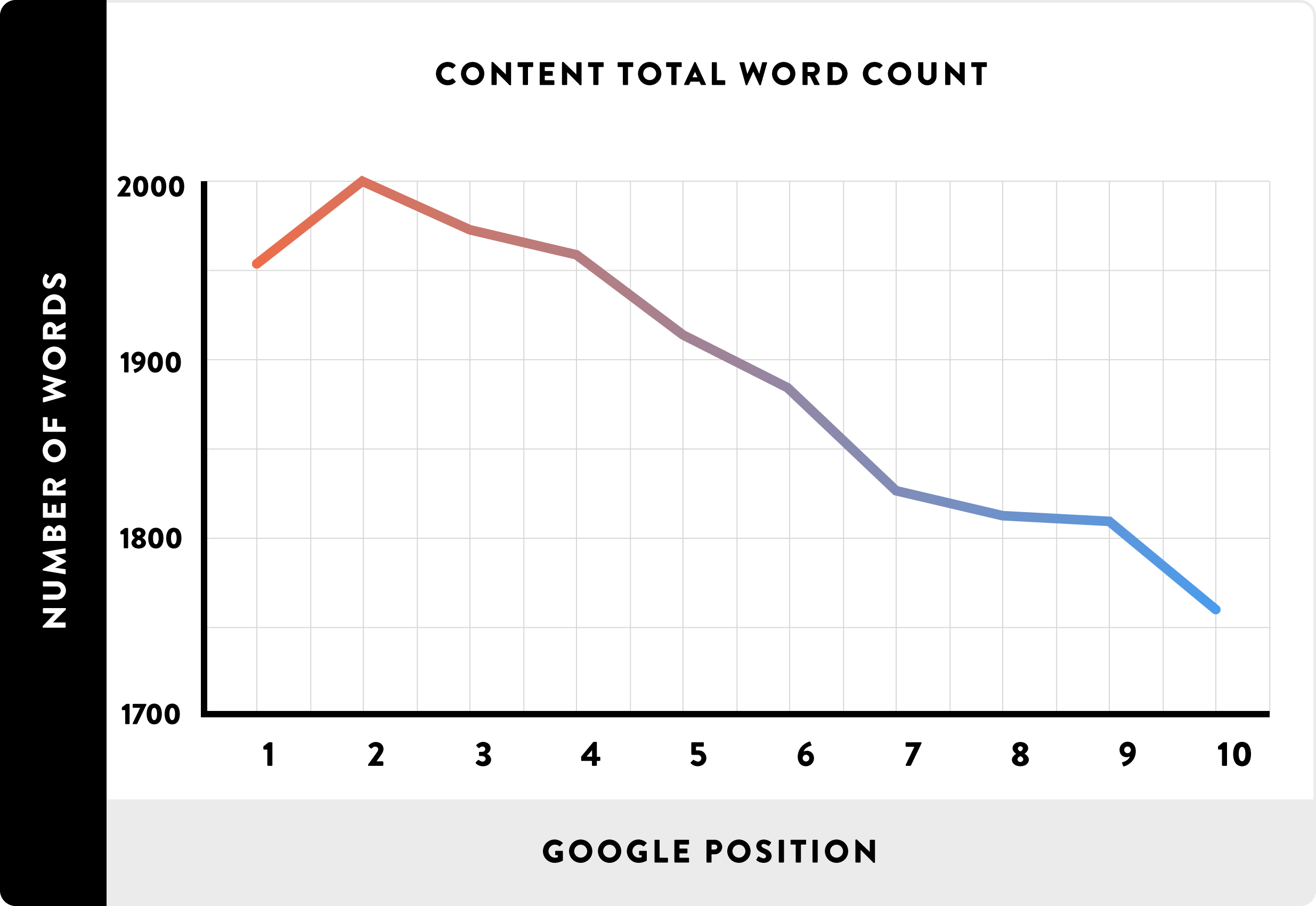Editing is just as important as writing in the process of creating quality SEO content. Find out if you should use a checklist or tool, and here are 5 SEO content checker we absolutely recommend!
Content marketing and SEO are simply like peanut butter and jelly. They fit together perfectly, and one would not be the same without the other.
However, to truly understand the relationship between the two, we must understand what the two terms mean.
- Content marketing is a marketing strategy that focuses on creating relevant and valuable content and distributing it consistently to a well-defined audience with the ultimate purpose of generating profit through customer action.
- Search engine optimization (SEO) is the process through which one can optimize their website to boost their rankings in SERPS, search engine results pages regarding certain pre-selected keywords.

When it comes to creating content online, you would need to mesh both to truly create engaging content that can be discovered by your audiences.
Conversely, search engine optimization is especially necessary if you want potential customers to find your website whenever they search for relevant queries through search engines.
You could use many ways to optimize your site, such as enhancing user experience, having a website architecture that is easy to navigate, using relevant ads, etc.
However, it takes creating content to get your site notice. And that is given if you have engaging and relevant content. In any case, you need to optimize your content could help you be more visible to the relevant crowds.
Using these two strategies together helps you create a trusting relationship with your audience, and through optimization, increase the number of visitors clicking through to your site. When done correctly, you get to amass a huge audience that’s more likely to convert.
How do you ensure you are writing quality SEO content?
You could use two ways to ensure that you are writing good quality content that’s also SEO-friendly.
One, you could use an SEO checklist. There are various SEO checklists available covering different aspects of content creation to make sure you adhere to the best SEO practices in your content creation.
An ideal SEO checklist should cover both the on-page and off-page aspects of SEO from keyword research to social media promotion.
But before anything, let’s give you a quick rundown on the SEO basics you should do when checking your content.
Basic SEO Content Checklist for Beginners
Once you are done writing your content, here are 6 primary practices that you should reference for optimization:
- Ensure that you have done detailed keyword research and target relevant keyword groups that have good search traffic potential.
- Make sure that your SEO title is optimized with keywords and enticing to drive high CTR.
- Plan your content silo and create relevant pages optimized for both search engines and users.
- Make sure that your website is accessible to both users and bots.
- Build relevant links to websites with high-quality content.
- Track important metrics to tell you your content performance.
If you want the best SEO optimization results, you’ll have to go through these various aspects and incorporate them into your content as naturally as you can.
Second, use an SEO content checker or an SEO content analysis tool.

On top of these basic SEO practices, it’s always best to supplement the process with content analysis tools like BiQ’s Content Intelligence to further check your content.
SEO content checker or content analysis tools you use should provide you with reliable metrics that you can use to adjust your content and optimize it for the best results.
Often, these tools can help us accomplish tasks we can never do manually, taking into consideration your keywords, readability, contextual relevance, as well as comparing your content with your competition, which provides a lot of critical information you can use to improve your content and in turn your rankings.
Of course, the ideal course of action is to implement the best of both worlds and we will walk you through how our team here at BiQ optimizes our content by asking ourselves these 8 questions.
8Qs to Check your Content SEO
1. Is your content fun and easy to read?
One thing we often need to remind ourselves when writing SEO content is that are you writing for your audience?
Cause the thing with writing a 2,500-word long article and all those attempts to include keywords naturally can make it easy to neglect the readability aspect of your content.
Just recall the time when you have read some bad writing, I’m sure that you had a feeling that even though the content had some pretty nice ideas, it was just hard for you to go through it much less appreciate the ideas.
Great website content should be an easy read that’s well organized with a smooth flow between one idea and the next.
The content needs to be engaging, begging the reader to keep on reading. This is the only way you can hook your readers and prevent them from looking for similar info elsewhere.
So always read through your content again to check if it is readable, clear, and engaging. Of course, you can do this by yourself but it would be best if you get a friend or co-worker, just so you can get a fresh perspective.
Better yet, just plug it into our BiQ’s Content Intelligence and yes, analyze your content readability to understand if your content structures are complex and if your whole writing caters to your audience.
Our tool segments your article by sections, so you can easily pinpoint any segments that do not fit your audience and just edit those. This is an especially handy feature when you are writing long-form content.
At the same time, BiQ’s Content Intelligence will also give you an idea regarding the tone of voice for your paragraph.
Is it sad, happy, or maybe just neutral.
Keep in mind that engaging content is capable of stirring emotions, so you would want to make sure your writing is never robotic and is able to drive your reader’s emotions.

Essentially, your tone of voice should match the type of content you create and the type of relationship you are looking to cultivate with your target audience.
If you want to sell recreational products or services, then your tone could be upbeat and fun. However, if your products, services, or audience is more formal, it would be best to adopt a more formal tone.
Whichever tone you choose, it would be best to note that your audience is the determining factor influencing the kind of tone you’ll need to adopt. Do extensive research on your audience before deciding on the tone you’ll use. A little trial and error won’t go wrong, especially if you’re starting.
2. Is your content relevant to your keyword?
When it comes to creating content online, it’s all about appearing and answering your users’ search queries.
You can use our BiQ’s Keyword Intelligence to research actual search queries. Simply type your topic or niche and it will return relevant keywords with the search volume data, trends, and cost-per-click.
Most importantly, you could also use our keyword analysis tool to quickly filter out keywords with the highest commercial value and those likely to get you the most traffic. Just filter to transactional keywords and arrange according to value and you will have your profitable keywords.
At the same time, our keyword tool also sorts the keyword by relatedness so that you can discover related LSI keywords that you could include in your content as well to make sure it is relevant.
Managing your content’s optimum keyword density is important here since too few keywords may not help your page visibility. However, if too many keywords are used in your content, it may result in keyword stuffing.
To get your content’s keyword density, you divide the keywords by the number of words in your content.
Many SEO experts widely accept the optimum keyword density to be around 1-2%. The 1-2% keyword density means that the target keyword will appear one to two times in every 100 words that appear in your content.
Besides, you can use BiQ to get even more in-depth details. Just customize your keyword research by location, find relevant keyword trends in your niche, and even get content ideas.
Using this detailed information could help you effortlessly optimize your website for keywords and boost your SERP rankings for the right audiences.
3. Is your content properly formatted?

Great content structure is when you use HTML headings to help you break your content into easily digestible sections to improve readability.
Your content needs to be connected and flowing seamlessly. This will help the reader move down from one section of the text to the next more easily.
Besides, well-structured content has two major benefits.
- This helps the reader understand your content and spend more time reading it, increasing the time-on-page which creates a positive signal to Google.
- By inserting important keywords in your title and headings, it can let search engines can crawl and understand your content better, which will ultimately boost your page SEO for the right keywords.
Note: You also want to make sure you are using related keywords in both your subheadings and image alt text.
4. What is your word count? (Especially with relation to the top-ranking content)

Many studies have shown that Google has a preference for long-form content with a word count of over 2,000 words. However, this can be further from the truth.
Thing is, it really depends on your topic and what the content is about. Let’s take a food recipe as an example, it wouldn’t make much sense to have word count playing a significant role here.
After all, your word count is the total number of words on your page or post and you shouldn’t just add unnecessary steps or ingredients to your post just for the sake of lengthening it.
And honestly, can you imagine reading a 2,000-word recipe? You would be put off by this gargantuan reading task before even trying out the recipe.
At the end of the day, the number of words in your post depends on your audience, the topics being discussed, and the total average word count of top-ranking content in your niche.
Still, Google tends to rank longer content higher than shorter content and it is not without reason. This is because longer content helps Google get an idea of what your content is all about, and it associates this with having more authority in the niche.
Fun fact: The shortest content you write needs to be more than 300 words to provide Google better context.
5. Do you have a good image-to-text ratio?
According to academics.skidmore.edu, the best image to text ratio needs to be 20:80.
This is because 90 % of all the data transmitted in the human brain is visual, and the recall value of all visual content is about 65%, while the same for text is merely 10%.
Besides, some visuals are more engaging than others.

Keeping these statistics in mind, it’d be proper to ensure that you have enough compelling photos throughout your content to ensure that your readers are not overwhelmed by the text.
Apart from that, you need to make sure that your images are not just meaningless stock images. It’s always better to have helpful images that contain valuable information.
6. Do you have an awesome headline?
Headlines are your first impressions in the SERPs.
So while using your keyword as part of your headline may help with your rankings, you must also ensure that your headline is enticing enough for users to click.

Because despite having your keywords in your headline will help search engines rank you higher than most other websites that don’t have the keyword in their headlines. This is only in the beginning.
You will then only be able to sustain the ranking by having content that delivers and answers the search intent. And Google understands this by looking at your click-through rates and time-on-page.
However, that being said, it would probably be best for you if you don’t use clickbait headlines.
Avoid using headlines like “How to make one million dollars with just one click!” These types of headlines are misleading, and they can create a negative reputation for your website.
7. Is your content grammatically correct?
Checking your grammar is one of the most essential albeit underrated steps. Though it does not affect your SEO directly, it is important to create a great user experience and brand reputation.
It really doesn’t take much more than a misspelling to make people lose the trust in you. So make sure to include this step when going through your content’s SEO optimization.
The best step you could take would be to edit your content to be free of any grammatical errors and complex sentence structures by running it through grammar tools like Grammarly or having a second pair of eyes look at it.
8. If you are using a ghostwriter, what is your content plagiarism score?
In the case you are hiring ghostwriters, you should always check that their content is free of plagiarism since this may cost you in the long run.
Website owners need to check their content for plagiarism, grammar, and readability before posting it on their website.
If the content has any direct quotes from a particular website, you could cite the source, including some quotations, or even paraphrase the content. You could check your content for plagiarism on tools such as Copyscape to ensure that you are on the safe side.
Best SEO content checkers to use
If you are looking to maintain your content quality and SEO less manually, there are various SEO-friendly content checker tools out there.
These tools are especially time-savers for analyzing long forms of content that would otherwise be hard for one to go through on their own.
However, you should only go for the best and most efficient analytical tools. That’s why here we have a list of SEO content checker recommendations that would make your workload a whole lot easier.
SEO content analysis tools
1. BiQ’s SEO Suite
It’s not surprising but BiQ lands as our top recommendation with a full SEO suite that has everything you would need to optimize your content for search engines.
You can use Keyword Intelligence to discover your target keywords and outline to start creating content, use Content Intelligence to analyze your content’s word vector to make sure it is relevant, and then use Rank Tracking to analyze your content performance.
This makes it quite a comprehensive solution to analyze your content and further improve it based on data.
However, if you are just looking for an SEO content checker, the Content Intelligent analysis tab provides a real thorough analysis.
Aside from readability and tone of voice, the tool also takes into consideration the word vector analysis of your content by comparing it against the top 10 ranking content in the SERPs with regards to your keyword.
The feature tells you the exact paragraph is less relevant than the entire content. Using the edit needed section, you could check which paragraph needs editing, dive in, and make the necessary changes to the content and fill in the contextual gap.
WordPress plugins
2. SEOPressor
If your page is operating out of WordPress, you might want to consider using SEOPressor. This WordPress plugin is a handy tool that provides you with total control over your on-page SEO.

The tool offers you an SEO score and some suggestions on how you can optimize your content. It also provides advice on the best practices to LSI keywords and optimal keyword density that is designed to help boost your visibility on Google’s SERPs.
3. Yoast SEO

Another SEO WordPress plugin. After installing your Yoast SEO plugin on your WordPress platform, you should click on your WordPress dashboard’s new SEO tab. If this is your first time, you’ll see a notice informing you of making first-time configurations for your SEO.
One special feature Yoast SEO offers is a specific analysis of the cornerstone content. Suppose you mark an article in Yoast SEO as cornerstone content in the cornerstone content section.
In that case, the content analysis will be a little stricter – your article will need to be longer and have more interlinking, for example.
Chrome plugins
4. Gdoc SEO assistant

If you create your content on Google documents, one handy SEO content checker tool you got to use is Gdoc SEO Assistant.
It works similarly to SEOpressor where you will have to insert your keyword, and it’ll provide you with relevant SEO suggestions and a list of related keywords. Using this information, you can optimize your content based on the real-time suggestions provided.
5. SEO content checker
A Chrome plugin tool from Copywritely, SEO content checker is easy to use, and it’ll help you check for plagiarism, relevance, readability, and keyword stuffing. The tool allows you to make your content better for your users and search engines. It also has various other uses.
Our favorite feature is that it highlights any parts of your content that are duplicated. You can then correct these parts by clicking on them and rewriting them. The tool helps you with your sentence structure. It enables you to alternate long and short sentences for better readability.
Key Takeaway
Creating SEO optimized content is no easy task. It requires a lot of effort, trials and errors, and perseverance.
You’ll need to update and reassess your keywords constantly; however, with a system comprising of both a trusted, efficient SEO content checker and a simple checklist, you can help simplify this process by a mile-and-a-half.
I hope you enjoyed the article, and don’t forget to share your feedback on how you check your content in the comments section below. Tell us if you used any of the tools mentioned and how your experience was. Happy content creation!




